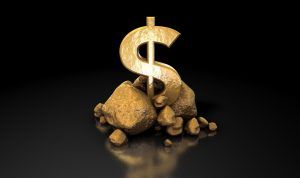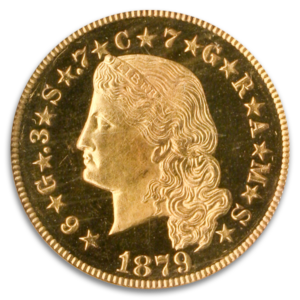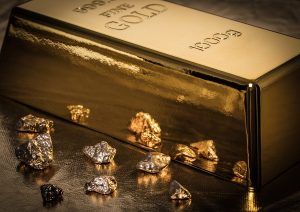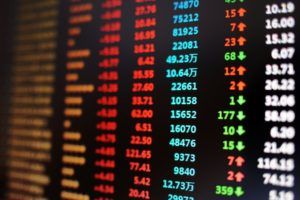Has the Psychological Impact of COVID Altered Investor Behavior?
Posted on — Leave a commentWe live in confusing times. The outlook for a COVID vaccine has never been more promising. Yet, the number of new cases in the US has never been more dire. This dichotomy has people reeling because they are rightfully frightened while guardedly optimistic.
Consider the tone Pfizer CEO Albert Bourla struck earlier this month when he remarked on the company’s progress towards a vaccine stating, “until now I was thinking if we have a vaccine. Now I’m discussing when we’re going to have a vaccine.” The question of when has never been more pertinent as the total number of known cases in the US reached 4 million in recent days. Meanwhile, new cases worldwide have increased by 35% since the end of June.
The unprecedented nature of the pandemic is powerful enough and pervasive enough to fundamentally change the way people perceive risk. As a result, investors are taking a more defensive stance. This retreat from risk might explain why more investors are embracing gold as part of their portfolio. Recently, gold traded above $1,900 an ounce for the first time since 2011. The increased interest in gold as a mainstay of a well diversified portfolio is evident not only in climbing prices but in the “fear index” created by the Chicago Board Options Exchange (CBOE).
The fear index, formally called the “Volatility Index,” illustrates the market’s expectation of volatility for the next 30 days. Over the last three months the fear index has experienced many intense fluctuations. These dramatic changes are an indication of the angst underpinning many investment decisions. It is no surprise that “a third of Americans now show signs of clinical anxiety” according to research published in The Washington Post.
This anxiety is evident in financial decisions which, in times like these, send even the most stalwart investors to the edge. While this phenomenon is evident in everyday observations, formal research shows that “extreme emotional responses are apparently counter productive from the perspective of trading performance,” according to MIT research. The researchers also concluded that emotions like fear are harmful because they are powerful enough to override higher-level thinking by “short-circuiting” complex decision-making. Today, we are seeing plenty of short-circuiting in the market as investors retreat from their long-term investment strategies in favor of behaviors that offer a sense of short-lived calm.
The effect of this behavior becomes outsized as more investors give in to the impulsiveness often caused by uncertainty. Moreover, it is unlikely that we will see this behavior abate anytime soon. While pharmaceutical companies like Moderna, AstraZeneca, and Pfizer are optimistic about their vaccines, they are hesitant to pinpoint a date for availability. In the meantime, gold continues to fulfill a critical need for investors. Analysts like Eily Ong at Bloomberg Intelligence believe gold could continue its climb well into 2021 “amid rising geopolitical risks in a lower-for-longer interest-rate environment.”
Perhaps the most reassuring aspect of a gold investment is the fact that much of its value is based on its rarity and universally agreed upon value. There is no capricious board of directors, short-sighted CEOs, or fickle managers who can fall victim to the emotionally-driven decisions that are inherent to human psychology.
Want to read more? Subscribe to the Blanchard Newsletter and get our tales from the vault, our favorite stories from around the world and the latest tangible assets news delivered to your inbox weekly.
Monday Morning Wrap Up – July 27, 2020
Posted on — Leave a commentFalling dollar helps gold shoot above $1,900 an ounce. 
The U.S. dollar fell five days in a row last week.
While paper money fell in value, gold and silver leapt sharply higher last week – fueled by a new Cold War with the U.S. and China, expectations for another trillion dollar government stimulus bill (paid for by newly printed dollars) and interest rates stuck at zero.
The historic 2020 bull market in precious metals is on fire.
The months-long rally in precious metals has more room to run with firms like Goldman Sachs and Citibank projecting more gains ahead. Last week’s gains in gold were the first time the metal traded above $1,900 since 2011.
Silver has surged a remarkable 26% higher since the year began, while gold is up 23%. Upside price targets in gold are seen at $2,300 an ounce and silver at $25.00 an ounce.
A new “Cold War” is building between the U.S and China.
Last week, Secretary of State Mike Pompeo put forth a grave speech to the nation and world. In his speech, titled “Communist China and the Free World’s Future,” he declared the failure of 50 years of engagement with China. And, Pompeo called for free societies to stand up to Beijing.
The United States shuttered the doors on the Chinese consulate in Houston. Soon after, Beijing lashed out and closed the U.S. consulate in Chengdu – which was considered to be the most valuable diplomatic output for gathering information on China’s far west region.
Pompeo’s speech pits East against West.
Sadly for Americans, we are the debtor nation. China is the rich nation that buys our Treasury securities to fund our nation’s gargantuan debt.
The politics could have immense economic consequences on American’s pocketbooks in the future. If China loses appetite to continue to buy our Treasury debt, the outcome would be double-digit interest rates and worse.
Senate Banking Committee approves Judy Shelton.
Last week, the Senate Banking Committee moved forward Judy Shelton’s nomination to the Federal Reserve’s policy making board.
President Trump nominated Shelton, a proponent of returning to the gold standard. However, she has faced widespread criticism from economists across the country. She is viewed by some as unqualified for the job.
The next stop for Shelton’s path to the Fed is a confirmation vote on the Senate floor, where Republicans hold a majority 53-47. Stay tuned.
The week ahead
The major market moving event this week – is the Federal Reserve’s policy making meeting on Wednesday, alongside Fed Chair Jerome Powell’s press briefing.
Wall Street awaits the Fed’s current views on the health of the U.S. economy and how monetary policy will support the fledging recovery.
Also due out this week is the first look at the second quarter Gross Domestic Product economic activity – the report is released on Thursday. Wells Fargo expects a 35% annualized contraction. That would represent more than three times the previous, largest decline on record, which was a negative 10% reading in the first quarter of 1958.
Parting thoughts: the danger of ‘free money’
As the U.S. government prepares to pass another trillion dollar stimulus package, it’s instructive and disturbing to consider how ‘dependent’ the U.S. economy has become on government bailouts, new money-printing and zero percent interest rates.
Here’s what Ruchir Sharma, chief global strategist at Morgan Stanley warned last week in the Wall Street Journal:
“The mantra of government officials is that these efforts are not only necessary but also will carry no cost or consequences. They believe that they can easily borrow to pay for it all because the last four decades of easy money have brought interest rates to near or less than zero: Money is free.”
“This is a dangerous form of denial… All of this leads to low productivity—the prime contributor to the slowdown in economic growth and a shrinking of the pie for everyone…At the same time, easy money has juiced up the value of stocks, bonds and other financial assets.”
Can the government indeed be the solution for all our economic woes?
In this world, protecting your wealth and future with hard assets like gold and silver has become more important than ever.
Have a good week!
David
What Could Gold Do In the Second Half of 2020?
Posted on — Leave a commentUncertainty has long been the default outlook of investors. The present, however, represents both uncertainty and volatility not commonly seen in the markets. COVID-19 cases continue to climb, geopolitical events develop on an hourly basis, and markets are wavering. These factors, which are likely to  remain in flux over the next six months, have investors confused. In times like these, it is often useful to examine the most influential characteristics of the present to understand the future.
remain in flux over the next six months, have investors confused. In times like these, it is often useful to examine the most influential characteristics of the present to understand the future.
When it comes to the future of gold in H2 of 2020 investors must consider how competing assets are poised to perform because gold performance is driven, in part, by the relative attractiveness of fixed-income instruments and equities.
For example, consider one of the most popular fixed-income securities, the U.S. Treasury. Today, benchmark 10-year Treasuries offer a slim yield of only 0.621%. At this level, Treasuries are not far from their all-time low of 0.569%. As a result, investors, even those seeking safety, have little reason to seek out this kind of fixed-income solution. Moreover, as Barron’s recently reported, “in real terms, the Treasury inflation-protected securities 10-year yield has fallen to negative 0.81%, a hair from its nadir of negative 0.85% reached on Dec. 5, 2012.”
This under-performance might prompt investors to look elsewhere, like stocks. However, there are emergent problems here as well. While equities appear to be a rare bright spot for investors today a deeper analysis reveals problems. Some have touted the resilience of the S&P 500 which is about flat for the year. This performance, while not remarkable, does seem to indicate the market has held its value despite a crippling pandemic. The problem is that the index’s ability to retain its strength appears dependent on high valuations. At the moment, S&P 500 valuations, as measured by price to earnings ratios, are nearing levels seen during the dot-com bubble. For many investors it is worrying that a flat YTD performance demands such high prices.
The potential price appreciation of gold in H2 of 2020, however, is not entirely reliant on the dimming prospects among equities and fixed-income investments. Gold has proven it can command higher prices based on its own merits. That is, gold outperformed all major assets in the first six months of the year. The NASDAQ, US cash, EAFE stocks, oil, and EM stocks all under-performed in comparison to a 16.8% gain in US-dollar terms in the value of gold during H1 of 2020.
As the future unfolds gold continues to be an attractive investment for several reasons. First, the problems plaguing fixed-income and equities are unlikely to abate in the next six months. They are systemic. Second, positive price momentum seen in the first half of the year appears supportive of continued growth. Third, the pervasive sense of heightened uncertainty as seen by a volatility index that is running approximately double what it was pre-pandemic, indicates that other investors will support gold’s upward trajectory as more flock to the safe haven investment.
Stella’s Lofty Purpose (And Scandal)
Posted on — Leave a comment If you’ve ever traveled abroad, you understand the hassle that comes with changing currencies.
If you’ve ever traveled abroad, you understand the hassle that comes with changing currencies.
In 1877, John Kasson, wanted to change that.
Kasson, a congressman from Iowa, was appointed as the Envoy Extraordinary and Minister Plenipotentiary to the Austro-Hungarian Empire. In his foreign travels, Kasson lamented the difficulty in exchanging U.S. currency abroad.
The $4 gold Stella coin was his proposed solution.
Who knew then, a coin with such lofty international commerce goals would fall victim to scandal. We’ll explain more about that later…but first let’s explain the significant goals.
After the Civil War and the Panic of 1873 eased, the American economy was strong and international trade was increasing at a steady rate. As more and more Americans traveled abroad for business and pleasure, a solution was needed to convert U.S. currency easily overseas.
Kasson advanced the idea of the $4 Stella as a path forward toward joining the Latin Monetary Union (LMU) – a partnership between Belgium, France, Italy, and Switzerland. Through the LMU, foreign currency was easily exchanged between member nations.
Stella Never Circulated
The U.S. mint developed a pattern coin – that was never circulated –as an example for U.S. Congressman as they debated the opportunity to join the LMU.
The fascinating and highly coveted $4 gold coin was nicknamed Stella – as the Latin word for star is stella.
The beautiful gold coin features a five-pointed star on the reverse. The Stella pattern was only minted in tiny amounts in 1879 and 1880 in two types.
Two of America’s most famous coin designers created these patterns:
Charles Barber designed the Flowing Hair.
George T. Morgan designed the Coiled Hair.
Today, these coins are extremely rare and in high demand as an example of America’s outstanding numismatic art. And, then, there’s the scandal too.
Only 437 Stellas were minted in 1879. They were struck for the Congressman to review and consider the proposal.
Stellas Were Spotted In the Most Surprising Places
Yet, shocking to many, these handsome gold coins were popping up as medallion necklaces hung on madam’s bosoms in high-end brothels in Washington D.C. known to serve illustrious clientele – like U.S. Congressman.
These brothels were famous for large oil paintings, fancy red plush parlor furniture, pricey European carpets, and real silver on the table alongside porcelain dishware. Guests and residents feasted on gourmet meals including high and mid-priced cuts of beef, pork and goat, alongside exotic items for their day – like coconut and Brazil nut. Expensive French champagne was ever-flowing.
There was outrage in the numismatic community, as none of these special coins were offered for sale to the public – at any price. Yet, Washington’s most famous madams proudly flaunted these exceedingly rare coins. Even today, some Stellas can be found that reveal traces of the necklace loops…
Congress ultimately rejected the idea of an international coin and Stella, struck for only two years, was never a circulating coin.
Notably, because the coin goals were international commerce, the obverse states its metallic content in the metric system.
See the Stella coin’s unusual inscription “★6★G★.3★S★.7★C★7★G★R★A★M★S★” on the obverse stating the gold content.
Monday Morning Wrap Up – July 20, 2020
Posted on — Leave a commentSilver Climbs 68% since Mid-March Low
Precious metals are on a tear this summer.
Silver soared as high as $19.44 last week, and continues to climb today, cementing a 68% gain off the mid-March low.
The rotation toward silver is evident in the precious metals arena, as silver has now outpaced recent gains in the S&P 500 and even gold.
Investors are piling into silver as an alternative to Treasury bonds and even gold.
Industrial demand for silver is growing amid factory re-openings in the U.S., China and elsewhere around the globe. Silver is a critical component in industry and is widely used in solar panels, medical equipment, consumer electronics, car engines and more. Because of the industrial demand, silver demand – and prices – typically rise as economic activity picks up, which is a key differentiator from gold.
Near-term, silver bulls are eyeing the psychologically significant $20.00 an ounce level, with gains easily forecast beyond there.
The gold-silver ratio remains historically wide spread at 94 – which signals that silver remains extremely undervalued compared to gold.
Expect dramatic catch up in the months ahead by silver.
Meanwhile, the gold market has stabilized above the $1,800 an ounce level as modest price weakness quickly sees strong buying action enter the marketplace. Analysts and Wall Street firms remain extremely optimistic on the outlook for gold – with a run through the all-time high just above the $1,900 an ounce level seen potentially even before year-end.
Consumers Losing Confidence…
Last week, we saw the University of Michigan’s consumer confidence index fall to 73.2 in July, down from 78.1. Our take? That’s an indication that the surge in new coronavirus infections across much of the country is worrying consumers.
Backward Looking Government Data Provides Hope, But…
The June retail sales number came in better-than-expected at 7.5%.
Consumers were out buying essentials like clothing, furniture, electronics and sporting goods last month, while online retailers and groceries saw marginal declines.
Looking ahead, August retail sales faces challenges once those $600 weekly unemployment checks expire at the end of this month.
“Economic data out this week point to a historic recovery. But, with coronavirus cases on the rise across the country, concerns are growing that these gains may be short-lived,” wrote Beth Ann Bovino, U.S. Chief Economist at S&P Global Ratings. “Retail has nearly reached its pre-pandemic point, in part because of government assistance, but consumer sentiment data already shows fears of the rising number of COVID-19 cases,” she added.
Kicking the Can down the Road
The U.S. budget deficit hit $3 trillion in the 12 months through June, the Wall Street Journal reported last week. The culprit? Soaring stimulus spending, while tax revenues plunged. That gap could widen even further if Congress moves ahead with another round of emergency spending.
How will our country ever pay its debt? The Federal Reserve’s money printing policies are becoming a crutch for our country. These actions only devalue our fiat money now and in the future.
The Fight Continues
The fight against rising Covid-19 infections continues with new requirements nationwide from some of the largest retail stores. Walmart, Starbucks, Target, CVS and a slew of other major retailers now require shoppers to wear masks while shopping in their stores. What will the fall months bring as seasonal influenza enters into the mix. The health crisis has not yet been tamed.
Looking Ahead
We are just weeks away from August and September – historically and seasonally – the worst months of the year for the stock market. Covid-19 is still spreading. Many cities and states are slowing or reversing the reopening plans.
Is your portfolio ready for what lies ahead?
Gold and silver are proving to be shining safe havens in the midst of this historical health and economic crisis. And, recent news reveals that money market funds may not be as safe as you think. Until next week…
Take care,
David
Suggested Reading:
In April – we let our clients and readers know that the bull market in silver was beginning. There’s still more to go. Don’t miss out on the next leg up in silver.
Monday Morning Wrap Up – July 13, 2020
Posted on — Leave a commentGold: One of 2020’s Top Performing Asset Classes
All eyes are on the gold market.
Gold closed higher for the fifth week in a row, cementing its spot as one of 2020’s best performing asset classes.
Gold is up 17% this year and closed above the $1,800 an ounce level last week. Silver wasn’t going to be left behind – and it also closed higher last week above the $19 an ounce level.
The trend for gold points UP – and new all-time highs above $1,900 (scored in 2011) are just around the corner.
This year, gold has already hit new all-time highs in 16 currencies, including Gold/euro, Gold/British Pound, Gold/Japanese Yen, Gold/Australian dollar, Gold/Canadian dollar, Gold, Chinese Yuan, Gold/New Zealand dollar.
Yes indeed. Gold $2,000 here we come.
There are No Easy or Quick Fixes for This
There’s no getting around it.
We heard a bunch of bad news last week – as major companies warned of massive job losses ahead.
Iconic Brooks Brothers filed for bankruptcy last week after over 200 years in business.
United Airlines warned it may need to fire 45% of its workforce. That follows American Airlines statements suggesting it may have 20,000 more workers than it needs.
In the banking sector, Wells Fargo, the largest U.S. bank employer, is readying to cut “tens of thousands” of jobs in 2020, Bloomberg reported.
There are no easy or quick fixes. It will take at least 10 years for the labor market to recover from the Covid pandemic, according to the most recent data from the Congressional Budget Office (CBO).
While government officials state there is no appetite to force another shut-down, the pandemic continues to accelerate with a new single day Covid case high. Sadly, last week, Florida, Texas, California and Arizona saw their Covid daily death tolls hit record highs, according to Hopkins data.
What lies ahead for our country? The pandemic is spreading fast in Sunbelt states. Will Covid fizzle out on its own soon – or will the United States health crisis grow doubly worse once the seasonal flu season kicks in during the fall months?
The scary truth is that no one knows. If the health crisis continues to accelerate in the months ahead, another lockdown or shelter in place is one of the biggest risks to our economy ahead.
Waiting for the next shoe to drop?
The stock market is on edge, trading sideways last week in a holding pattern.
It’s only a matter of time before the stock market adjusts to the economic reality seen across the country with over 40 million Americans filing for unemployment benefits since the pandemic began just a few short months ago.
Businesses are shedding workers, because their profit and revenues are diving. A full 40% of companies in the S&P 500 pulled their earnings guidance because of the virus. There are real risks ahead.
Another new bullish forecast for gold
We have been asked whether we still like gold at these levels. The short answer is a resounding “yes” – a July 6 Wells Fargo Investment Institute.
In fact, the Wells Fargo Investment Institute issued its 2021 year-end target for gold at $2,200-$2,300!
“In our opinion, gold has a host of drivers working in its favor, and believe that gold is on its way to new highs,” the Wells Fargo Investment Institute report said.
The last word
Any portfolio disruptions you’ve seen this year due to the stock market volatility have been mitigated if you are holding gold now. Gold is in an uptrend, climbing – with more room to run. We are seeing clients increase exposure to gold now – as investors want to capture more portfolio protection and asset growth in these uncertain times.
If you have questions, we are here to help.
Warm regards,
David
Market Insights from Behind-the-Scenes at a National Retailer
Posted on — Leave a commentBy Mark Ferguson 
Mark Ferguson is the editor and publisher of CAC Market Values. He has graded coins professionally for PCGS and served as the principal market analyst while managing updates for more than 65,000 price points for Coin World magazine. In other words, Mark knows his coins!
Demand for investment-grade rare coins has surged since the coronavirus pandemic and economic crisis began six months ago; and this demand has been strong for CAC coins. This month’s market report gives you a behind-the-scenes look at what the country’s oldest and largest precious metals and rare coin retailer is seeing in client activity: Blanchard and Company. It’s an eye-opening look at where demand is coming from, which will likely continue for the next several years. This new demand bodes very well if you own high-grade, rare CAC coins.
For more than an hour in late June, I discussed the rare coin market and CAC coins with David Zanca of Blanchard and Company. David is a senior portfolio manager at the firm and has been with Blanchard since 1993. Among other collections he’s helped build, over a span of 25 years Zanca built one single portfolio of ultra-rare coins totaling nearly $20 million, a portion of which recently came to auction.
From the launch of CAC in 2007, Blanchard and Company has partnered with CAC founder John Albanese and Certified Acceptance Corporation in establishing a market for CAC coins. Albanese and CAC are the primary suppliers of rare coins for the Blanchard firm. Certified Acceptance Corporation makes a market in CAC-approved coins by publishing buy prices for CAC coins in the dealer-to-dealer market.
Blanchard and Company was founded in 1975 by the late James U. Blanchard who began a nationwide movement in 1971 to legalize gold ownership, after it had been outlawed by the Franklin D. Roosevelt administration in 1933. Blanchard also founded the National Committee to Legalize Gold in 1971. Success was achieved in 1974 when President Ford legalized the private ownership of gold. The firm’s focus has been on the investment aspect of rare coins, but in doing so, has built advanced collections such as the one referred to above.
Motives for Private Investors Who Seek Rare Coins
Recent volatility in the stock market has caused many investors to seek alternative investments. Many of these people are of the age at which they don’t want to take on a lot of risk. According to David Zanca, the biggest concern of investors is the “printing” of money by the Federal Reserve and the stimulus that has been pumped into the U.S. economy, which may increase. The concern is rising inflation and the loss of purchasing power of the dollar. Low interest rates, with the possibility they could become negative rates, is another concern of investors. They view gold as an alternate currency that’s a safe haven investment and they seek to own tangible assets they can control. Similarly, rare coins serve this purpose.
Investors who are not collectors get introduced to rare coins through buying precious metals from a firm like Blanchard that handles both. Other investors are referred by friends or family who have purchased coins. After buying a few coins, some take an interest in the history of the coins and become collectors. According to Zanca, what’s changed in the last six months is that many of these new collectors are putting investment money into their collections, rather than just excess “play money” they have sitting around. He said every portfolio manager at Blanchard is seeing this. He added that the market is moving from a long-term collector mindset to an investor mindset. We saw this same change during the inflationary 1970s. Then, after the coin market peaked in 1989, we experienced a return from an investor-based market to a collector-based market over the next 10 to 12 years. Dealers generally refer to these phases as “cycles.”
Buying Preferences
Over the past six months, Zanca has been seeing investors put a higher percentage of their assets into rare coins. Again, people are putting investment money into rare coins. The pandemic has introduced uncertainty into our financial lives and investors realize that stocks can go to zero, whereas gold and rare coins act like a safety net in that they maintain value, they won’t go to zero, and owners have custody of the assets. Zanca said this is similar to what he saw in the 2003 to 2004 period when demand for rare coins picked up and accelerated into a bull market that lasted until the financial crisis began in the 2007 to 2008 period. Because many investors are buying coins with investment money, he sees demand for higher-valued coins increasing.
Zanca stated that high-net-worth individuals and ultra-high-net-worth individuals want high-grade coins. They seek perfection and are drawn to CAC coins. They feel comfortable with CAC-approved coins and see the benefits of owning them. CAC coins “level the playing field.” Zanca said helping buyers feel comfortable with CAC coins is an educational process. But it’s become much easier with the internet. Pictures, data and history are readily available, allowing people to educate themselves about coins. The internet has opened the market and is bringing more people to coins.
Early gold coins are popular among these investors – they’re easy to understand and have an interesting history. Humbert $50 “slugs” and branch mint gold coins are especially popular, but these investors are also looking for guidance on what to buy. In addition to gold coins, these buyers find early silver coins appealing. One big problem Zanca sees is that CAC gold coins are getting increasingly difficult to find, as are true rarities. Owners are not selling because they don’t have good places to go with the proceeds. This is a classic scenario that puts upward pressure on market values.
Zanca brought up an interesting concept. He said that CAC coins have not been through a bull market yet, so we don’t know the true power they hold. CAC was launched in November 2007, as the financial crisis was developing. The crisis sparked a temporary correction in the coin market, but it experienced a strong market between 2011 and 2014. Even so, that period could not be described as a true bull market.
Zanca sees premiums for CAC coins over non-CAC coins growing even more than they have already, adding that the possibilities for movement in prices for CAC coins are far greater now than at any time in the past. When CAC coins first came to market, it was difficult for the investor to understand the price premiums they were selling for. Now, almost fourteen years later, CAC coins have a proven and solid track record of pricing in both public and private sales. CAC coins have established themselves as the preferred coins investors want to own.
Zanca added that prices for non-CAC coins are irrelevant; CAC coins make up their own market. In conclusion, he said he believes Americans are beginning to realize the value of holding tangible assets, not just paper investments. Europeans have practiced this financial strategy through the ages, and he believes Americans are beginning to realize the benefits of owning tangibles that they control. It’s a new mindset that he sees developing in America.
Analysis
This is a telling look at how demand for rare coins has increased during the past six months. In an atmosphere where seasoned collector-investors and dealers have been concerned about the graying of the hobby and a diminishing market for their coins, this is new evidence that investors will be buying our coins in the near term, not just a younger generation of collectors. Additionally, Americans are not the only people who share the same economic worries. I’ve recently been contacted by a group of investors from outside the U.S. who are looking to buy high-end U.S. coins, for many of the same reasons – they fear inflation.
I’ve read professional wealth studies by large multi-national firms that conclude high-net-worth and ultra-high-net-worth individuals put, on average, approximately ten percent of their investible assets into “treasure assets.” This could be fine art, antique cars, rare wines or rare coins, for example. The percentage varies slightly around the globe and for different cultures, but the average hovers around 10 percent. U.S. coins are appealing to many of these investors because of the standing the U.S. has in the world and the well-organized numismatic market we have in the U.S.
Lastly, this new demand and the scarcity of some CAC coins, such as early gold coins, has to put upward pressure on their market values over time. Additionally, demand for rare coins has been shown over time to run parallel to trends for the price of gold. The huge economic stimuli that’s been injected into economies around the world during the past six months, and which will probably expand, has raised inflation fears. Some experts in precious metals and economics predict the price of gold price will soar into the thousands of dollars per ounce during the coming years. That will help propel market values for rare coins to new record highs.
Want to read more? Subscribe to the Blanchard Newsletter and get our tales from the vault, our favorite stories from around the world and the latest tangible assets news delivered to your inbox weekly.
The Hidden Risk of Money Market Funds
Posted on — Leave a commentIf you are parking your sidelined cash in a money market fund, caveat emptor.
That’s Latin, of course, for let the buyer beware.
Long thought to be a safe harbor in turbulent times, money market funds are showing their true stripes these days. Few investors read the fine print on their investment company’s website or obscure SEC documents, so we are detailing current issues you need to understand here.
Long gone are the days when you can earn even 1% on a money market fund.
Today, the national average for a money market yield is 0.09%.
In fact, business is so bad in the money fund industry, Fidelity liquidated and closed two of its prime money market funds this month (June 2020).
A little history – breaking the buck
Investors’ park cash in money market funds that they want to keep safe. Investors believe that these accounts are secure, safe and can’t lose money.
Yet, that is not true.
Money market funds seek to keep the net asset value (NAV) at $1. There is a phrase called, “breaking the buck,” which means if the NAV falls below $1, investors will lose money.
In the midst of the 2008 financial crisis, a major money market fund – The Primary Fund, which had about $65 billion in assets – broke the buck. Initially, The Primary Fund reported that, until further notice, it would delay paying redemptions to customers for up to seven days, as permitted under mutual fund law. Source (NY Times)
Eventually, because the value of investments fell (the fund held a lot of debt from bankrupt Lehman Brothers) – it was forced to liquidate and investors in that money market fund only received 97 cents for each dollar invested.
What is going on with money markets?
The current zero interest rate environment and the specter of negative interest rates is making these funds even more risky now.
A money market fund generally holds investment-grade short-term government bonds that mature somewhere between 30 and 90 days. Some money market funds also hold triple A–rated corporate debt.
What happens when interest rates are zero or negative?
They lose money.
It’s important to remember that money market funds are not insured against loss by the FDIC. Here’s what the Consumer Financial Protection Bureau (CFPB) says:
“Money market funds are offered by investment companies and others. Money market funds are not insured by the FDIC or the NCUA, which means you could possibly lose money investing in a money market fund.” (Source: CFPB)
What will happen to your money?
Major investment companies are addressing the issue of negative interest rates and the impact on money markets funds on their websites – if you look for it. That shows that investors are asking questions about this – and the funds are tacitly acknowledging that that negative rates may cause a run on the funds.
Will you be able to withdraw your funds with these restrictions in place?
You may need to wait up to 10 business days to withdraw your funds from a money market fund and pay a “liquidity fee” to get it. And, these accounts have ‘broken the buck’ in the past – which means you may get back less than you initially deposited.
Charles Schwab notes it is permitted to impose a liquidity fee up to 2% on redemptions.
Here’s the info straight from the SEC’s documents:
“The SEC also is adopting amendments that will give the boards of directors of money market funds new tools to stem heavy redemptions by giving them discretion to impose a liquidity fee if a fund’s weekly liquidity level falls below the required regulatory threshold, and giving them discretion to suspend redemptions temporarily, i.e., to “gate” funds, under the same circumstances. These amendments will require all non-government money market funds to impose a liquidity fee if the fund’s weekly liquidity level falls below a designated threshold.” (Source: SEC rules).
Negative rates could cause a run on money market funds, which could send these funds spiraling lower fast.
Here’s the hard truth.
- You aren’t making any money holding funds in a money market fund (0.09% interest rate).
- The NAV of your money market fund could go below $1.
- You may have to pay up to a 2% liquidity fee to get your money back.
- You may have to wait up to 10 days to get your money back.
Where can investors park assets to ride out the pandemic in safety?
Gold and silver.
- Gold and silver are a tangible assets.
- They are highly liquid. Gold and silver can be quickly sold for cash on the spot – in any country around the world. Gold is one of the most liquid financial assets in the world.
- Gold is rising in value. In fact, gold is up 16% year to date!
- It is non-correlated to stocks – when stocks go down, gold rises.
Consider increasing your allocation to gold now. Get asset preservation, liquidity and rising value all in one golden package.
Want to read more? Subscribe to the Blanchard Newsletter and get our tales from the vault, our favorite stories from around the world and the latest tangible assets news delivered to your inbox weekly.
Monday Morning Wrap Up – July 6, 2020
Posted on — Leave a commentGold Surges above $1,800 for First Time Since 2011
Gold traded above the $1,800 an ounce level last week for the first time since 2011. The summer gold rally is hot and getting hotter.
As the economy continues to reopen, store clerks are reminding shoppers to put on their face masks. People are waiting for the next elevator. Hand sanitizer is available at almost every establishment you enter.
Yet Texas, California and Florida continue to reveal a swift increase in the number of confirmed Covid-19 infections. Over 57,000 new Covid cases, a record high number, were reported in the U.S. on July 3 as the number of new daily cases accelerates and points higher.
The new wave of infections prompted California to order 19 counties to partially close down some activities. On the East Coast, New Jersey and New York City delayed the resumption of indoor dining at restaurants.
Hopes for a “V” shaped economic recovery are being dashed as some states are now back tracking on economic activity plans.
How to Interpret June Jobs Data
Last week, the June employment report came in better than expected with 4.8 million new jobs created. The unemployment rate fell to 11.1% from 13.3% the previous month.
While that sounds promising, at the same time, another 1.4 million Americans lost their jobs last week and applied for unemployment benefits.
The bottom line – is that the economic data is “noisy” right now.
The stock market is down, the stock market is up. Lock-downs shutter businesses, some are reopening on a smaller scale. Others are getting closed once again. One economic report looks good, another reveals the depth of the crisis.
Here’s the hard truth; it might take years for all of the jobs that were lost to fully recover. In fact, during the 10 recessions since 1950, it took an average of 30 months for lost jobs to finally come back, LPL Financial said recently.
“As good as the recent economic data has been, we want to make it clear, it could still take years for the economy to fully come back,” explained LPL Financial Senior Market Strategist Ryan Detrick. “Think of it like building a house. You get all the big stuff done early, then some of the small things take so much longer to finish; I’m looking at you crown molding.”
Fed Meeting Minutes Reveal How Little They Really Know
Last week the Fed released its minutes from the early June Federal Open Market Committee (FOMC) meeting. What do we find?
A lot of uncertainty.
In fact, the Fed meeting minutes referenced “uncertain” or “uncertainty” 45 different times in the 13-page report.
Yes, really.
The Fed minutes also revealed that the central bankers remain fairly pessimistic on the economic outlook ahead as “voluntary social distancing, precautionary saving, and lower levels of employment and income” are likely to weigh on recovery prospects in the medium term.
In the News…U.S. Dollar at Risk
Billionaire hedge-fund manager Ray Dalio highlighted the shift towards “storeholds of wealth” like gold in an interview with Bloomberg last week.
Dalio, not afraid to speak the truth, stated that the Federal Reserve is boosting markets, and even more worrisome, the U.S. dollar could lose its appeal in the world marketplace.
“The economy and the markets are driven by the central banks in coordination with the central government,” Dalio told Bloomberg.
He warned that if any viable alternative to the U.S. dollar emerges, investors will dump U.S. Treasury bonds, which offer zero return, and pile into the new alternative.
“That would be terrible for the United States,” Dalio continued. “It would be probably the biggest disruptor not only to the markets but to the whole world geopolitical system.”
Sadly, given the size of our U.S. government debt ($22.8 trillion and rising every day) and the massive money creation by the Federal Reserve – make this a “when” not “if” scenario for our country.
Will this disruption come in 1, 5, 10, or 20 years? No one knows.
But, when it does, foreigners will pull out the U.S. dollar, sell U.S. Treasuries, pull out of the American stock market – leaving the U.S. nothing but $22.8 trillion in debt (likely much more by then) with no one willing to buy our bonds to finance the debt anymore. That will mean interest rates – probably at the highest levels ever seen in the United States – double digit for sure. And, a massive devaluation of the U.S. dollar.
It’s no wonder that bank after bank on Wall Street are turning more and more bullish on gold by the day.
More Bullish Forecasts for Gold
Another U.S. investment bank recently jumped on the bandwagon of bullish price forecasts for gold – Citi analysts have now increased their 3-month forecast for gold to $1,825 an ounce.
Goldman Sachs calls for Gold $2,000
Goldman Sachs forecasts gold to hit $2,000 within 12-months.
China Power Rising
On the global front last week, China’s power is rising – as it boldly passed a National Security Law for Hong Kong, which threatens the end of the ‘one country, two systems’ promised 23 years ago on the handover from Great Britain to China.
China’s rising power and ambition stretches far beyond Hong Kong with economic ramifications that will likely become the biggest challenge for our country in the decade ahead.
Preparing Your Asset Allocation for the Next Stage of the Covid Crisis
The second half of 2020 ushers in a U.S. presidential election, a potential “second wave” of Covid in the fall, once the seasonal influenza season begins, and a whole host of geopolitical challenges as China continues to force its way onto the world stage in a stronger way.
If you’ve been considering increasing your allocation to gold, the argument has never been stronger. Move to the safety of gold, an asset that will preserve, protect and grow your wealth today, tomorrow and for generations to come.
Best,
David
Feeling Good About Stocks? Watch Out for Recency Bias
Posted on — Leave a commentIt turns out, investors have short memories.
If you have assets invested in the stock market, you might be feeling okay right about now.
Indeed, the stock market has rebounded smartly off the March lows.
The S&P 500 is still down on the year, but only a 3% decline – versus the stomach-wrenching 35% decline we lived through in March.
Do you believe the worst of the Covid-19 inspired stock market declines are behind us?
It feels easy to believe that right?
In fact, the jury is still out on whether this is a simply a bear market rally.
Nonetheless, it is all too common for investors to assume what has happened recently will continue to happen in the future.
Psychologists call this “recency bias.” It refers to the phenomenon where an individual more easily remembers recent events, compared to something that occurred in the past.
Simply put, the recency bias makes it easier for you to remember the recovery off the March lows than the sickening sell-off that began in February.
Here’s the rub. Investors often mistakenly rely on recency bias to make investing decisions.
It might not be wise to become too complacent about the stock market right now. It may be recency bias trying to trick you up.
Recent data shows that a lot of investors dumped stocks in February and March, during the stock market crash, and went to cash.
Assets in money market funds surged to a record-high $4.6 trillion recently, according to data from Refinitiv Lipper dating back to 1992.
If you are sitting on cash right now and feeling optimistic about the stock market. Consider how you may re-allocate those funds.
Major investment firms remain bullish on gold and are now advising high net worth clients to consider allocations to gold as a replacement (or partial replacement) for their bond allocation, given the paltry yields offered on U.S. Treasury securities today.
Don’t fall prey to this psychological investment trap. Don’t project recent experiences (the swift stock recovery) onto the future.
Right now, it may feel like it is smart to move back into a heavy weighting to equities. But, for investors who aren’t properly diversified, their portfolios could suffer – perhaps even dramatically – if trends change quickly.
When investors think about trading psychology, fear and greed usually pop to mind. However, there are deeper psychological biases at work – like the recency bias – that may impact how we think and act without even realizing it.
The lesson? Be cautious after big wins in the stock market. This is a time to rely on objective allocation principles. Be aware just after a big recovery rally in stocks, you may be vulnerable to bad investment decisions.
Never before has it been more important to seek out objective, expert investment guidance. If you moved to cash in February and March, give us a call and we can talk through scenarios that could be appropriate for your long-term investing goals and risk tolerance levels.
Want to read more? Subscribe to the Blanchard Newsletter and get our tales from the vault, our favorite stories from around the world and the latest tangible assets news delivered to your inbox weekly.








